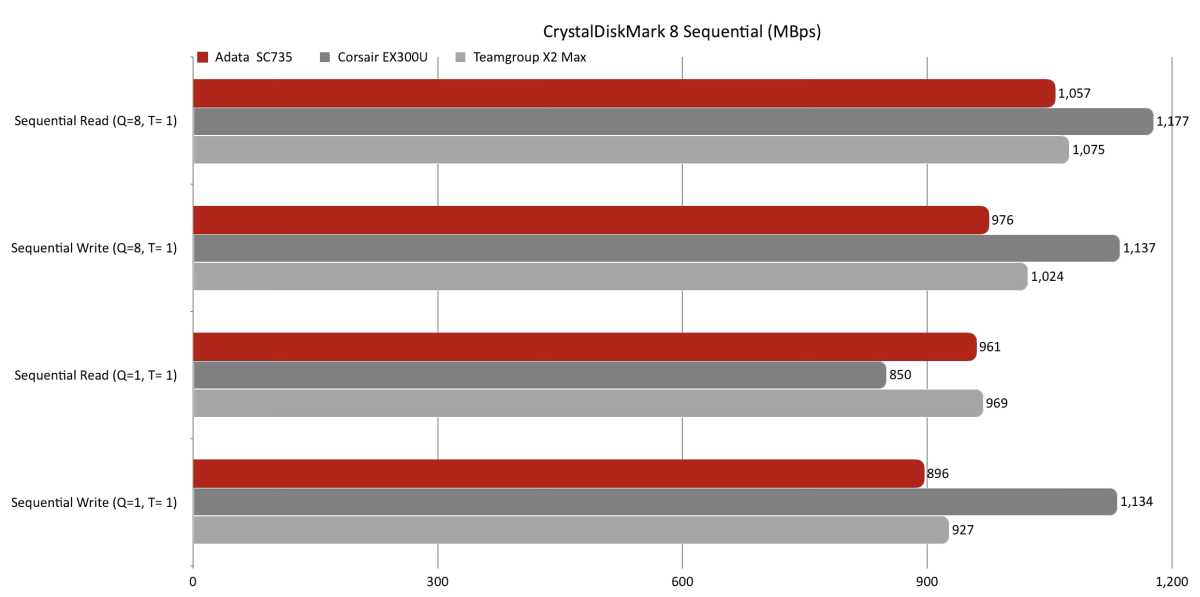Adata’s SC735 isn’t just another thumb drive; it’s a surprisingly capable SSD squeezed into a remarkably small package. Its sleek, blue-striped design immediately catches the eye, offering a fresh take on portable storage. Available with up to 2TB of capacity, it delivers impressive value for those needing extra space on the go.
But don’t let its size fool you. This drive is built for convenience. The retractable Type-C connector is a stroke of genius – smooth, secure, and eliminating the worry of lost caps. It locks firmly into place, offering a satisfying click with each extension and retraction.
The SC735 feels solid in hand, despite its lightweight build. A clever design detail – a flat side – allows it to sit steadily on a surface, avoiding the wobble that often plagues smaller drives. It’s a small touch, but one that speaks to thoughtful engineering.

Under the hood, the SC735 utilizes a Silicon Motion controller and QLC NAND flash memory. It boasts 10Gbps USB speeds, but its performance reveals a key characteristic: a reliance on caching. This means blazing-fast speeds for smaller files, but a noticeable slowdown when dealing with larger data transfers.
Adata backs the SC735 with a five-year warranty – a generous offering. While a TBW (Terabytes Written) rating isn’t provided, the QLC NAND is expected to handle a substantial amount of data over its lifespan, likely exceeding most users’ needs within the warranty period.
The pricing is undeniably attractive. The 1TB version comes in at $80, while the 2TB model is just $150. These prices are remarkably competitive, often undercutting similar capacity internal SSDs. It’s a compelling proposition for budget-conscious buyers.

In real-world testing, the SC735 shines when handling everyday tasks. Copying smaller files feels snappy and responsive. However, when transferring large amounts of data – 48GB or more – the drive’s performance dips significantly as it exhausts its cache. This results in write speeds comparable to older USB hard drives.
The difference is stark. While reading speeds remain competitive, writing large files can take considerably longer than with other 10Gbps SSDs. This limitation stems from the QLC NAND’s native write speed, which is slower than newer technologies.
The 2TB model offers a larger cache, delaying the slowdown, but it’s still inevitable. The 1TB version will experience the performance drop sooner. Capacity directly impacts the amount of available caching, influencing sustained write speeds.

Despite this limitation, the SC735 remains a viable option for many. For users primarily transferring smaller files, or those who prioritize portability and affordability, the slowdown may not be a significant issue. It’s a trade-off worth considering.
Ultimately, the Adata SC735 is a clever and well-designed drive that delivers exceptional value. Its compact size, retractable connector, and attractive price point make it a standout in the crowded portable storage market. Just be mindful of its limitations when dealing with large file transfers.
Our testing environment utilizes a powerful Windows 11 system with cutting-edge components, including a PCIe 4.0 motherboard, a Core Ultra i5 processor, and ample DDR5 memory. We employ industry-standard benchmarks like CrystalDiskMark and AS SSD, alongside real-world file transfer tests, to provide a comprehensive performance evaluation.

We rigorously test each drive, ensuring it’s freshly TRIM’d and formatted with NTFS to deliver optimal results. It’s important to note that performance can vary based on usage patterns and drive fill levels. Our testing methodology is constantly evolving to reflect the latest advancements in storage technology.
Comparisons within this article are based on the current testing setup, ensuring accurate and reliable results. The SC735’s performance is evaluated in context, allowing you to make an informed decision based on your specific needs and usage scenarios.






